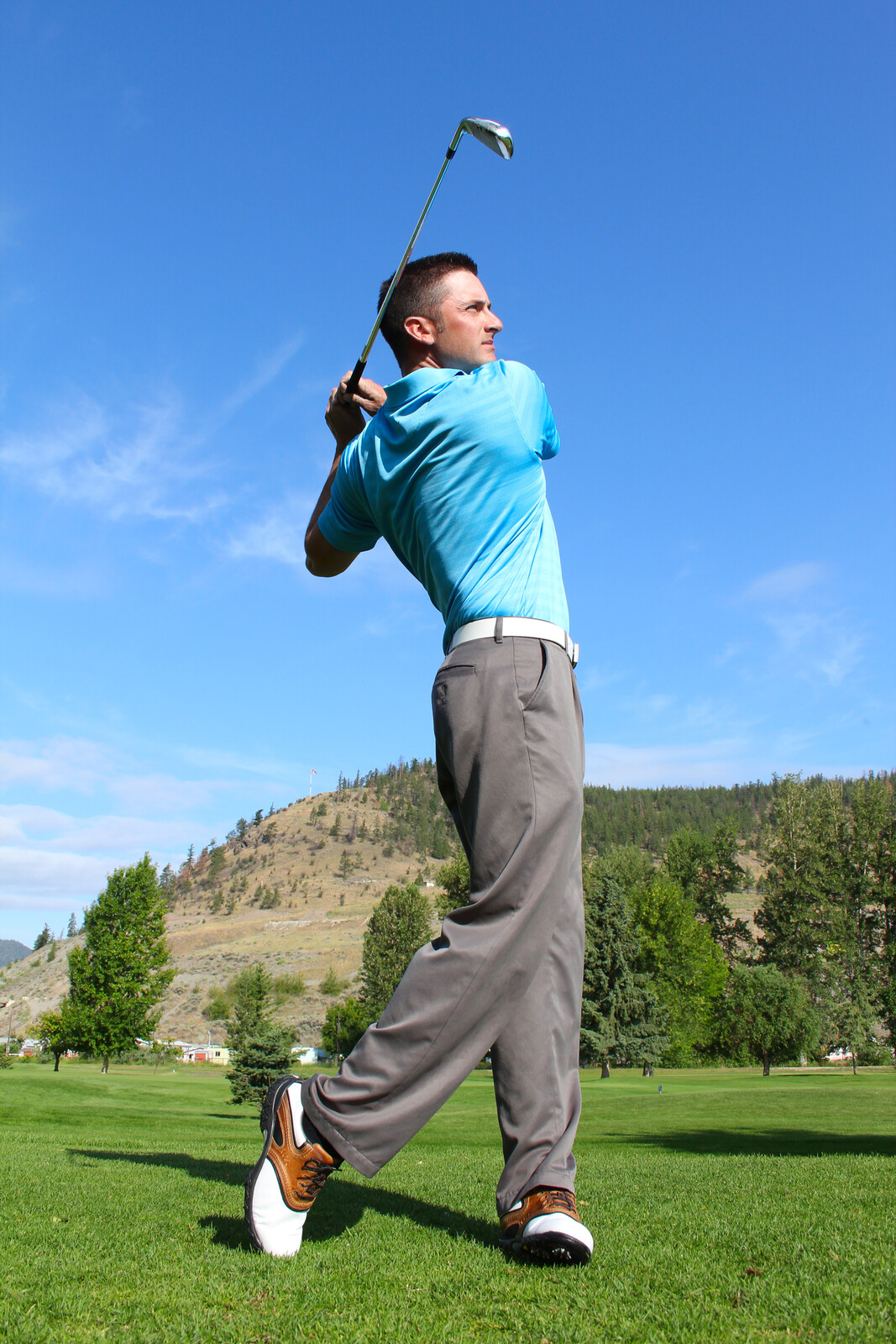Golf is all about rotation. Keeping your axis of rotation consistent allows for a repeatable swing and improved performance. In our body’s design there is one joint that is fantastic to rotate through, yet many of us struggle with. That joint would be your hip.
As a ball and socket joint the hip is designed to handle rotation, much more so than your spinal joints and certainly more than the knees which are hinge joints. Two key qualities that our hips need for golf are mobility (flexibility) and stability (strength). Watching current professional golfers from the waist down you will see that during their backswing there is very little motion in their lower body. This “quiet” lower body indicates very good rotational flexibility and strength in the hips.
In a biomechanical study comparing the physical differences between professional players and amateurs the number one physical characteristic difference was hip strength. The pro’s averaged 30% stronger in the hip muscles as compared to amateurs. So how does this relate to potential golf swing flaws?
In the backswing (right handed golfers) a lack of rotational flexibility or strength can result in a lateral slide of the hips or a lower body reverse pivot. Ideally in the backswing there is storage of power occurring in the right hip, similar to a baseball pitcher winding up before driving off the mound. Since the lower body and pelvis are to lead the swing into impact position a lack of strength in the hips may delay that motion and cause the arms and upper body to take over the transition move, resulting in casting the club or an over the top move.
Moving in to the impact position (again for right handers) it becomes critical that the left hip have both rotational flexibility and strength. From the backswing to impact there is a large linear transition of forces down the target line, however it is important that just before impact that the left leg “post up”. Having a firm left side just before impact is analogous to using a bull-whip and stopping the butt-end of the bull-whip to transmit forces to the tip of the whip, which is your club head. This requires good left hip mobility and strength.
Signs of potential left hip limitations include sliding through the impact position with the left knee diving toward the target or a delayed rotation, or clearing, of the pelvis around to the left. In both situations there is a loss of power and the swing becomes more arms dominant and less effective.
Limitations in hip flexibility and strength can also relate to injuries and pain such as lower back pain. When a golfer lacks hip rotational flexibility they may compensate and pass that motion to the lower spine, an area not designed for excessive rotation. This may result in an acute pain episode or simply chronic low back pain, a very common complaint in golfers.
If you are looking to improve performance, fix a sore lower back, or prolong your golfing career give some exercise attention to your hips. Five simple tests to check for symmetry of your hip range of motion can be found at the following link:
https://www.reboundsportspt.com/rebound/self-tests-for-hip-range-of-motion-golf-specific
In comparing your right to left hip with these tests, asymmetry could indicate a lack of flexibility on one side, hypermobility on one side, or that your pelvis is out of alignment.
Remember, your body is your most important piece of golf equipment!

